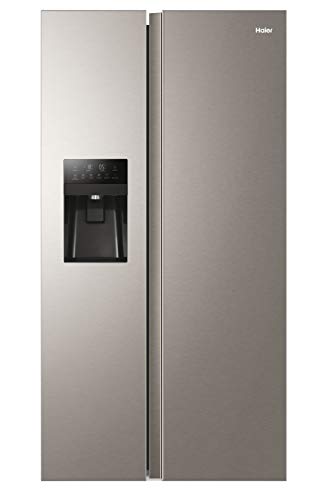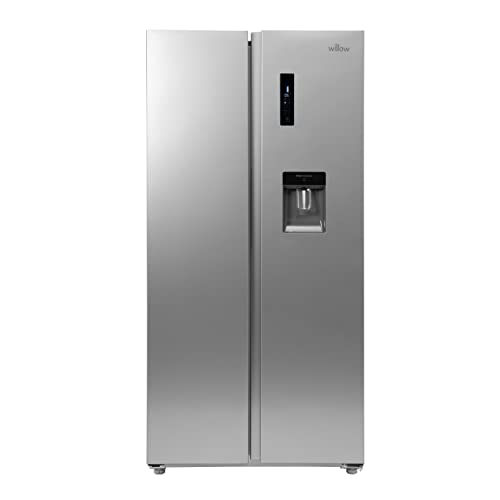There's A Good And Bad About Fridge With Ice Maker
페이지 정보

본문
 Benefits of a Fridge With an Ice Maker
Benefits of a Fridge With an Ice Maker Many refrigerators have an ice maker built in the door or sitting inside of the freezer, making it simple to serve fresh, cold water. These fridges are typically more expensive than others, but they can make it easier for you to avoid the headache of filling and cleaning the ice tray.
Many refrigerators have an ice maker built in the door or sitting inside of the freezer, making it simple to serve fresh, cold water. These fridges are typically more expensive than others, but they can make it easier for you to avoid the headache of filling and cleaning the ice tray.The circuit of the icemaker sends current to an ice valve. The water then flows through the ice mold and freezes to form cubes.
Convenience
It is evident that having an ice maker in your refrigerator will save you time. Instead of filling tray by hand, the ice maker does this for you. The ice maker is activated when a sensor detects the level of water inside the freezer. Once it reaches the correct temperature, the ice-making process begins. A valve opens and a cooling system directs water into molds for ice. A built-in thermometer is used to measure the ice and shuts the valve when it is frozen.
It's also helpful when you host guests. This means that you will always have plenty of ice and can save yourself from the embarrassing moment when guests request more, only to find that you are out. There are refrigerators equipped with an ice maker that has an ice maker integrated into the door. This makes it simple to serve water and access the ice without opening the fridge.
Refrigerators that are equipped with ice makers use less energy than conventional models. The ice-making system uses only a tiny amount of electricity to operate, and because they are usually utilized for extended periods of time, this can result in a significant reduction in your energy bills.
If you're looking to save more money, you can opt for one that does not have cooling tower. These "direct cool" units are fridges that include an ice maker. They utilize the same refrigerant in order to create ice as they do to cool your fridge. These refrigerators are more efficient than conventional ice machines and can reduce your energy usage by up to 25 percent. This can help you save money on your utility bills and also reduce your carbon footprint in the process.
Efficiency
With an ice maker, you will save time by not needing to fill and freeze ice cubes. Additionally, these devices provide an unending supply of fresh ice for you to dispense from the refrigerator or pour into your drink when you need. These devices are more efficient than refrigerators that require you to go to the freezer to retrieve an ice bag that has been frozen.
The majority of refrigerators equipped with ice makers are combo models that feature an ice maker in the freezer compartment as well as an ordinary refrigerator fridge freezers compartment. You can find standalone buy fridge freezers/freezers with ice makers integrated in the door or back of the freezer.
The ice maker inside your refrigerator is usually powered by the main water supply of your home. To begin the process it is necessary to turn on a timed switch that in the circuit briefly sends current down electrical wires to an water valve. This opens the valve, which then channels water into the ice molds. The built-in thermometer will signal the timed-switch to indicate that the ice-making process is completed. This means that the ice has sufficiently cooled to stop the water from entering the molds. A motor then spins a shaft, accompanied by arms that move the ice into the ice bin tray.
Certain ice machines allow you to select from two types of ice that are standard ice cubes or crushed ice. This is the best choice in hot weather when you're looking to cut down on the time it takes to cool your drink.
Your freezer may have been set too low when your ice maker ceases to produce ice, or the resulting frozen ice appears small and discolored. Check your owner's manual to find the manufacturer-recommended temperature and try setting it higher.
If your ice machine isn't producing ice or producing very little it could be because the water fill tubes are blocked. These tubes are essential for the machine to work efficiently. They draw their water from the home's main water source. Depending on the condition of your home's water supply, these tubes may develop blockages and mineral deposits over time. They can be eliminated using a pipe-cleaner or running the water line from your refrigerator through a filter.
Water Dispenser
Fridges with ice makers come with water dispensers that allow you to access chilled, filtered water without opening the refrigerator's door. Certain models let you add carbon dioxide to make sparkling water or pour hot water into a coffee maker, teapot and many more. These models usually cost more than fridges without ice makers. They also require a separate water line connection to get access to the water that gets melted and transformed into ice for your enjoyment.
Refrigerators first began offering ice and water dispensers in the 1980s, with simple ice makers with automatic controls that could produce one block of ice per day. Today, around half of all refrigerators feature a built-in ice maker and water dispenser.
The dispenser works by pulling cold water from the refrigerator's internal plumbing, transporting it to a small water filter that screens out particles and other basic contaminants. The water is then taken to an ice mold where it transforms into a single, solid block of ice. The ice is stored in a collection bin until it is ready to be dispersed.
When you're ready to drink water, a timed-switch in the circuit of your refrigerator sends a brief current through two wires that are connected to the dispenser. The current triggers an electronic solenoid, which opens the water valve for seven seconds, letting in just enough water to fill up an ice mold. The ice mold is usually made of plastic and has several cavities that are connected. When the ice is formed and the valve is shut, it will close, allowing the ice cubes to fall out of the mold and into the bin where they wait to be dispensed.
Most problems with fridge water or ice dispensers can be resolved with a little troubleshooting. For more in-depth information, check out our Fridge Dispenser Troubleshooting article to learn about the most frequent reasons for these issues and the best way to solve these issues.
Use a traditional ice cube tray that can be filled in the kitchen sink as an alternative to refrigerator water dispensers and ice dispensers. These tray can hold up to 25 cups of ice and offer more flexibility in controlling the amount of ice you need at any given time.
Cost
The convenience of a refrigerator equipped with an ice maker comes at a price. Refrigerators that have an ice maker tend to be more expensive than those without one, as they have to be professionally installed, connected to a water source and might require more maintenance or repairs. Additionally, refrigerators equipped with Ice makers typically consume more energy than those that don't have them.
The majority of fridges and freezers equipped with an ice maker provide the option of making both standard ice cubes and crushed ice. Many have a variety of sizes and shapes to pick from, which means you can alter the ice according to your tastes.
It's normal for people to become accustomed to a certain type of ice and then be disappointed when they can't find it in the supermarket or in a restaurant. If you own a refrigerator with an ice maker, you can get around this issue by setting up your refrigerator to produce your preferred type of ice in a controlled manner.
If you are a frequent drinker or host large gatherings, it can be frustrating to not have enough ice. Whether you're sitting alone after a hard workout, relaxing with your spouse after a long day or entertaining friends and family at home, you should be able to drink any time you'd like.
It's a great feeling to know that you will always have ice in the fridge for any occasion. If something goes wrong with the appliance, you'll probably require the assistance of an expert in appliance repair to fix it.
The average price of a fridge repair or standalone ice machine repair varies depending on the issue and the model of the appliance, but here are a few of the most frequently encountered problems:
If your refrigerator has an ice machine that isn't producing ice, it could be the result of a blocked supply tube or malfunctioning water inlet valve. These components are electrically powered that are susceptible to damage over time, and hiring a professional to replace them will cost you anywhere from $150 to $200.
- 이전글The 12 Most Popular Retro American Fridge Freezer Accounts To Follow On Twitter 24.08.14
- 다음글The Comprehensive Guide To Veleco Mobility Scooter Reviews 24.08.14
댓글목록
등록된 댓글이 없습니다.
